Retirement Musings – Changes on Road Bicycles Since 2009
After ten years, I retired from full-time work as Service Manager at Fit Werx, in Waitsfield, Vermont on January 1, 2019. While I may make the occasional guest appearance with a wrench, my days of full-time management and working on bikes has come to a close. In exchange, I hope to have more time to ride!
Thank you to all of those folks who have let me know that you will miss me working on your bike; the sentiment is much appreciated. It has been my pleasure to serve our clients during this time. As I built each bike I always asked myself whether there was something else I could do to make the end product better. More functional. More aesthetically pleasing. More durable. It has always been my goal to build each new bike, or to service any bike, to the highest level possible; to help the equipment work to its potential. Hopefully I succeeded in that goal more often than not.
I’ve found myself reflecting on just how much has happened in the bike industry since I started at Fit Werx. For the 25 years before I started at Fit Werx, it seemed to me that change in bicycles had progressed at a relatively glacial pace. Frame materials gradually moved from steel to aluminum and then to carbon fiber in the 2000’s. Gearing went from five and six speeds in the 1980’s to nine, with Campagnolo offering ten. Downtube friction shifters mercifully gave way to indexed shifters in the hoods. Incremental changes over a quarter century. However, the past ten years of change has been rapid to say the least; too numerous to, well, enumerate. I’ve always been a roadie who does an occasional triathlon. Thus I’m going to focus on a few watershed items on road and tri bikes that have changed what we now think of as a bike forever.
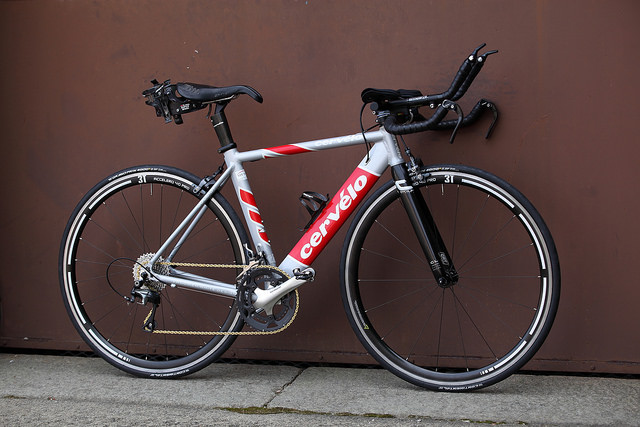
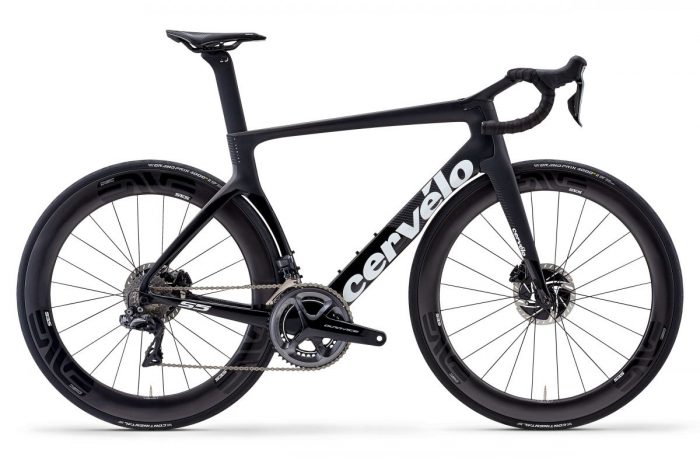
Internal Cables, Disc Brakes, Wide Tires and Over-Sized Forks
On the frame front, internal cable routing is almost universal. Rim caliper brakes are rapidly disappearing on newly designed bikes in favor of hydraulic disc brakes. Headsets and fork steerers are almost all tapered to increase front-end stiffness. Aero designs now seem to predominate. Frames now accommodate much wider tires than ten years ago. The only time we mount 23mm wide tires is on older bikes that won’t accept wider tires. Even the narrowest of road bikes are now routinely designed to allow the use of 28mm wide tires.
Road Bike Gearing & Crank Length Changes
Arguably one of the most functional changes in components in recent years has been expanding the gearing range. The number of gears on the back of a road bike increased to 11 cogs years ago. Campagnolo is now offering 12 cogs and leaked photos have shown SRAM e-Tap with 12 cogs. Shimano cannot be far behind and Rotor even announced a 13 speed 1x. Ten years ago the largest road cassette cog you could get from Shimano was 27 teeth, with Campagnolo at 29. Now, Shimano’s Ultegra group easily accommodates a 34 tooth cog, and frankly (don’t tell Shimano) it generally works fine with a 36 on most frames.
It wasn’t that long ago when road bikes came with a “standard” 53/39 crank. That combination is now rare on new bikes, as most bikes come with a “compact” (frequently 50/34) crankset. Sub compact road cranksets with a 48/32, or even 46/30, are starting to appear from Praxis, FSA, and most recently Rotor. Lower gearing, and shorter crank arms, now rule.
A 53/39 11-27 is a far cry from 48/32 11-34 when it comes to climbing for many riders.
Bottom Bracket Changes
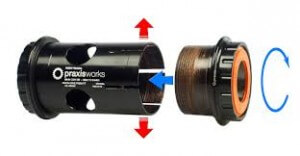 In pursuit of losing weight and increasing stiffness, the old standard threaded bottom bracket has been replaced by myriad new “standards” over the past ten years. BB30, PF30, OSBB, BB90, PF86, 386 EVO, BBRight… So much for the definition of the term “standard”. The common element in all is that the bottom bracket bearings are simply pushed into the frame in one form or another.
In pursuit of losing weight and increasing stiffness, the old standard threaded bottom bracket has been replaced by myriad new “standards” over the past ten years. BB30, PF30, OSBB, BB90, PF86, 386 EVO, BBRight… So much for the definition of the term “standard”. The common element in all is that the bottom bracket bearings are simply pushed into the frame in one form or another.
When “press style” bottom brackets were first introduced, trying to get the variants to function properly, without creaking, was a challenge akin to that facing Sisyphus. This spawned a whole industry of after-market press-fit bottom bracket solutions. Today, more bike manufacturers are sending their bikes with alloy bottom bracket bearing cups that have two sides that thread together inside the frame, such as the Enduro Torq Tite or the bottom brackets from Praxis.
At Fit Werx we have been recommending and using aftermarket overlapping bottom brackets since the moment they came out in place of standard factory-supplied plastic inserts. They are much less likely to creak compared to the plastic parts that just squeeze into a frame.
When it comes to bottom brackets in 2019, as the old saying goes, what goes around comes around. We are seeing a few newly designed bikes with “old fashioned” threaded bottom brackets again. Why? My guess is manufacturers have tired of consumers, and shops, complaining about creaky bikes.
Electronic Shifting
Ten years ago, all shifting was mechanical. Derailleurs were actuated by ratchets which moved cables running from the shift levers. Shimano came out with its first generation electronic shifting system back in 2009. Over the past several years I would guess that well over half the new bikes I have built have electronic shifting from Shimano, SRAM and Campagnolo. We have written about electronic shift systems many times since their introduction. Today, wireless SRAM eTap remains one of the best ways to upgrade a great older frame to a modern shift experience.
Adventure Bikes, Gravel Bikes, Tri Bikes, CX Bikes, Endurance Bikes, Race Bikes, Touring Bikes, eBikes, Fat Bikes…
The road bicycle world has become more segmented and specialized, with the development of genres such as aero bikes, endurance bikes, and gravel road or “adventure” bikes. I have seen a marked change in the type of bikes that I build. The majority of the market in Vermont now seems to be bikes designed for tires 32mm wide, or wider, suitable for use on dirt and gravel roads. The mountain bike world has so many niches that I hesitate to begin to name them, and each niche has its own frame design, geometry and suspension components, not to mention wheel and tire requirements, And let us not forget the emergence of fat bikes or what has happened to the integration of design of tri bikes on bikes like Cervelo’s P5X. And what about the rise of e-bikes? Choosing the right bike for your type of riding has become a bewildering maze almost impossible to navigate successfully without seeking help such as that available at Fit Werx.
Complexity of Building Bikes
The rapidity of change has made it hard to keep up with the emerging technologies. All of this added complication has made bikes much harder to build. When I started ten years ago I would build two bikes a day using the full Fit Werx Pro Build (where we strip the bike down to the frame), including the time needed to set the bike to the rider’s proper position. Now, it will routinely take me a full day to build a bike to Fit Werx standards and set the position, and some triathlon bikes can take almost 2 full days. I have been working a lot more overtime during the height of the season than when I started!
Shuttered Bike Builders
Some great manufacturers have regrettably disappeared. Ten years ago it seemed like many of the bikes I was building were Serottas of one model or another. A good chunk of the rest were Gurus. Serotta unfortunately fell on hard times and closed in 2013. Guru followed suit in early 2016. Fit Werx now represents some manufacturers that did not even exist ten years ago, such as Kelly Bedford (formerly with Serotta), and most recently Factor and Open.
One Thing that Has Not Changed…
Regardless of how much bikes and components have changed, or what brands have come to and gone from the showroom, Fit Werx has not deviated from its core philosophy. Selling bicycles should not be all about moving product out the door. We believe the focus should be on providing the client with a bicycle that puts them in the most efficient and comfortable position possible for that individual. We still believe that the best way to do this is to have the rider go through our comprehensive bike fitting before selecting and purchasing a bicycle. This allows us to determine that rider’s ideal position to perform this physical activity, i.e. pedaling a bicycle. Once that ideal position is established for that individual, we then help the client choose a bike from the myriad manufacturers that best supports that position and best suits their desired type of riding/use. Rider first, then bike, not the other way around.
When Fit Werx opened in 2002, bike fit was largely unknown outside of the racing world. Ten years ago few shops offered comprehensive bike fit, and many shops disparaged the whole concept. Now it seems like every shop offers some form of fitting using some “system” or other. The most important thing is neither the technology used in a fitting, nor what “system” is used, but rather the experience of the fitter and how the fitter uses his or her knowledge and experience to make sense of and properly apply the information generated. This is what differentiates what is done at Fit Werx from all but a small number of fitters/shops.
The technology we use at Fit Werx for our bike fittings has evolved over the years and our knowledge base has increased. A Fit Werx fit now is the best it has ever been. It goes well beyond just bike fit to explore the musculo-skeletal contributors/solutions to issues and improve posture and technique.
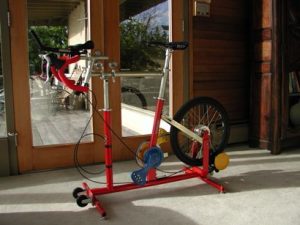
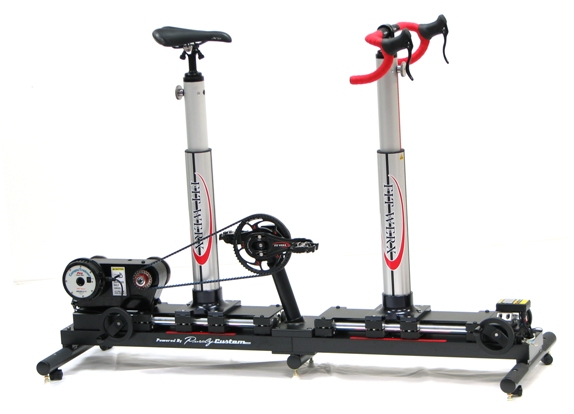
There are many, many well-made bikes on the market. Anyone thinking that they must have an “XYZ” bike because they are the “best bikes”, or because some pro team rides them, is falling for a marketer’s pitch. I remember a quote from a famous racer (maybe Sean Kelly) who, when asked the question, “What is the best bike?”, responded honestly by saying the one that he was being paid to ride. What the pros ride, or more to the point how much a bike manufacturer is paying a pro team to use its bikes, is irrelevant to you and me. The most important thing in purchasing a bike is not the brand name on the down tube but rather the quality of the design and construction of the bike, how that bike fits the rider, and if the bike is appropriate for the intended use.
What About Mountain Bikes?
I’m a road bike rider and the changes listed are primarily in the road bike world. Don’t even start with what has happened in the mountain bike world. A ten year old mountain bike is now a dinosaur. Triple cranksets? Gone, in favor of 1X systems. And suspension advancements? Too many to list and more than its own separate article worth.
Changes in Retail
I won’t go on at length addressing the rise of internet shopping that has exploded in the past ten years. Suffice it to say, things have changed. Bike shops, like any store that both sells and services a product, cannot survive on servicing what people bought on-line, at least not at hourly rates you will be willing to pay. If you want to have a bike dealer around to service your bike, answer questions, or provide you with expert fitting services and advice, you need to patronize those types of businesses for more than just labor. What do you think a car mechanic would say if you came in with a box of new parts you bought from some on-line site and asked them to install and tune them? Their response may well involve instructions to do something anatomically impossible.
Parting Words
My parting words of experience in the bike industry are to repeat an old adage: “You get what you pay for”. This is true whether you are considering who performs your bike fit, what service is to be performed on your bike, or what bike, wheels, tires, components or other products you want to buy and from where.
There are valid reasons why some bikes, components and products cost more than others. It is rare that the reason is that the bike shop or manufacturer, is overpriced or gouging you. In the case of products, those reasons often include safety based engineering. This is the main reason why, for example, Zipp and Enve wheels are more money than some discount carbon wheels. Likewise, there are good reasons why a Moots Vamoots RSL frame and fork is more expensive than some fully equipped, ready to ride titanium bikes. There are good reasons why a Parlee carbon fiber stem, handlebars and seatpost combination costs as much as some entry-level Tiagra bikes.
High quality design, materials and construction do not come cheap. But riding engineered and proven high quality parts offers performance, feel, function and longevity of the product that makes every ride that much better. Whether it is service or product, buying based solely on price may well end up leaving disappointment. A bike is a investment, not an expense. An investment that you should be able to enjoy for many years and see value on every ride.
Oh, and don’t forget to keep your bike clean, lube your chain often with a quality dry chain lube, and get your bike tuned once a year. Your bike is a high performance machine, and all machines work best if they are kept clean, lubed, and professionally maintained on a regular basis.
Hopefully my wife and I will see you on the road.
“No hour of life is lost that is spent in the saddle.” -Winston Churchill
“Whenever I see an adult on a bicycle, I have hope for the human race.” -H.G. Wells.

